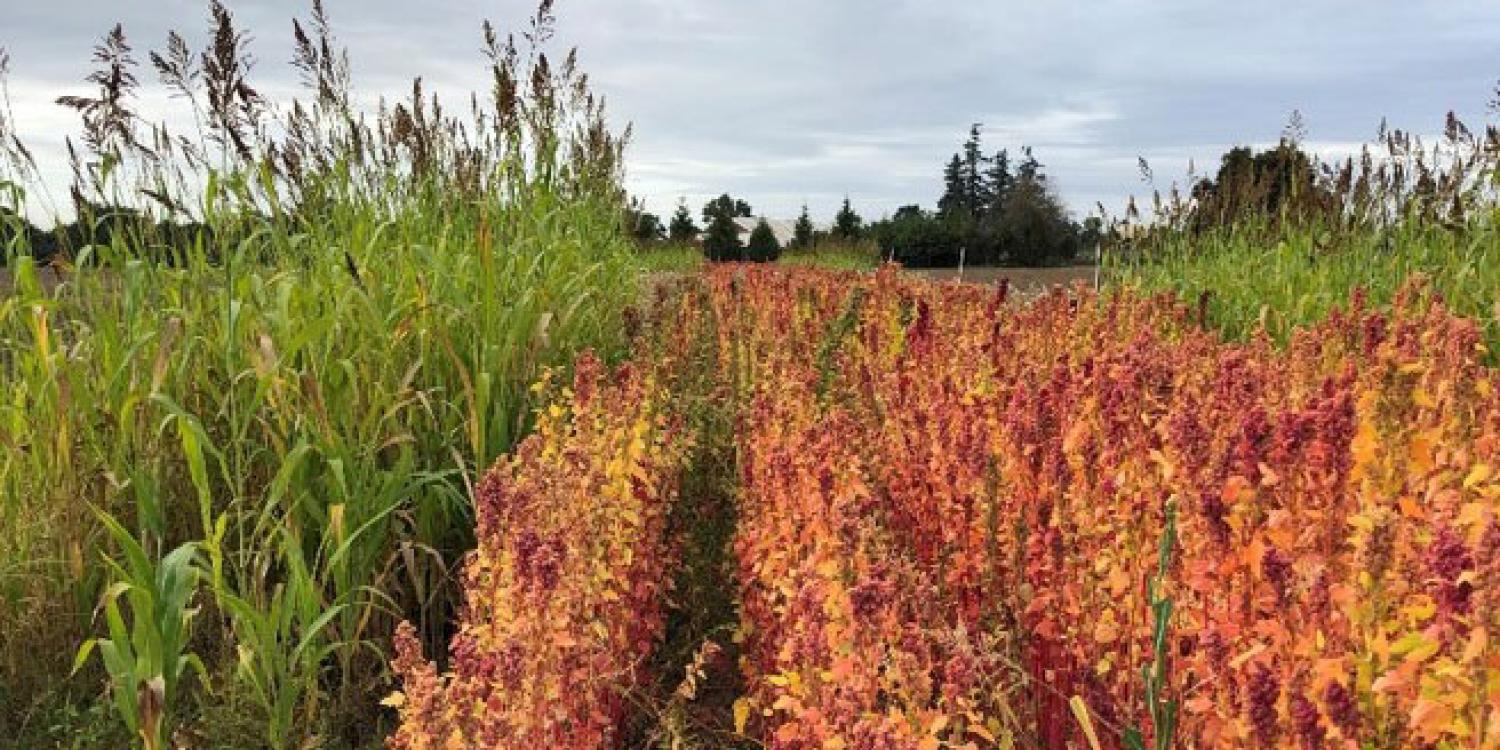
Quinoa has been grown for millennia in present-day Peru and Bolivia. Farmers there have cultivated thousands of varieties to provide consistent harvests in their diverse growing regions. The quinoa plant is a nutritious food, with a gluten-free natural balance of oils, protein and carbohydrates. Quinoa consumption in the U.S. has been steadily rising since 2007, and the U.S. now has the highest demand for quinoa in the world. But more than 90% of quinoa is imported. Here lies an opportunity for western Oregon farmers to provide a high-demand crop that can be locally produced.
In the fertile Willamette Valley, the adoption of quinoa in cropping systems has been hampered by production, processing and marketing difficulties. Finding a quinoa seed variety that is well-suited to the Willamette Valley is too time-consuming for any Oregon farmer to test on their own. To help address those challenges, the Oregon State University Extension Service tested 17 quinoa varieties and four planting dates to identify the most suitable options for the region. The quinoa trials were conducted in a half-acre field at OSU's North Willamette Research and Extension Center (NWREC).
"Quinoa shows great promise because there are quinoa varieties that will be well-adapted for production in different ecosystems," said Kristie Buckland, Extension vegetable and seed crop specialist at NWREC. Buckland’s work on this project focused on optimizing quinoa production, such as manipulating the planting date and using seed varieties that work best in western Oregon’s climate.
As a result, Extension and Oregon Agricultural Experiment Station research shows that quinoa has the potential to fill some crop rotation needs for novel crops in annual cropping systems, such as vegetable or seed production. When more is known about best practices and pest management for quinoa, farmers can readily incorporate the results into their rotations with greater likelihood of success. With ongoing quinoa research, farms can have additional crop options while simultaneously providing Oregonians with more locally sourced foods.
In 2021, Buckland began a partnership with a world-renowned seed breeding company that has successfully developed quinoa varieties that possess traits that simplify seed processing. This improved seed overcomes the major production obstacle within the United States, streamlining the farm-to-market supply chain in western Oregon.
"We expect this collaboration to continue as we work together to identify best varieties, production practices and adopting farms to establish the Pacific Northwest as world leaders in quinoa production," Buckland said. "We anticipate adoption of quinoa as an alternate rotational crop in vegetable and grass seed systems, estimated up to 30,000 acres per year at a value of between $5,000 and $12,500 per acre."
In addition to quinoa being a row crop that is easily adaptable to annual production systems common in the region, Buckland describes it as “a health substitute for gluten-free products or rice substitute.” Residents of the Pacific Northwest are known for being conscious of a healthy diet, so providing Oregonians with locally and sustainably produced quinoa could be a boon for farmers and consumers, she said.